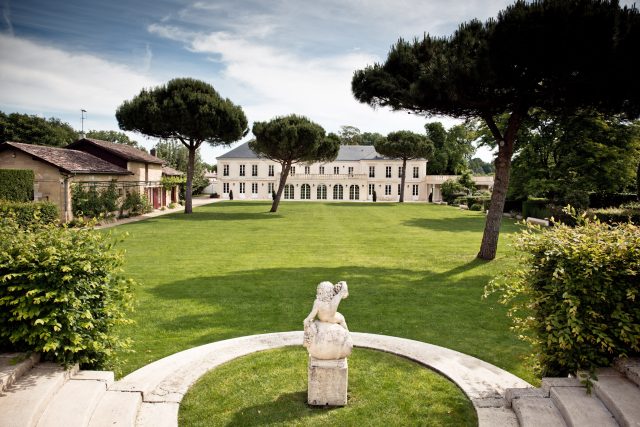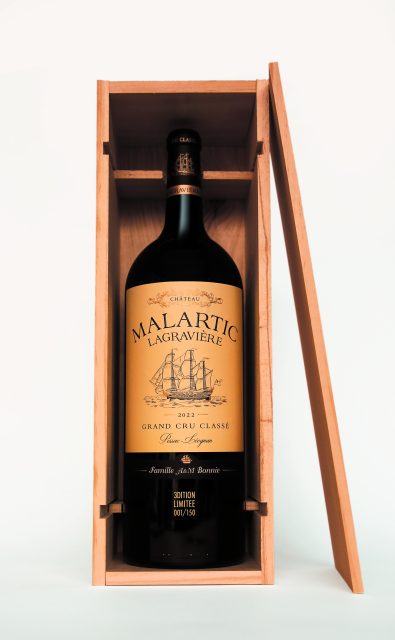This website uses cookies so that we can provide you with the best user experience possible. Cookie information is stored in your browser and performs functions such as recognising you when you return to our website and helping our team to understand which sections of the website you find most interesting and useful.
Malartic-Lagravière NFT magnums sell out in an hour
Bordeaux estate Château Malartic-Lagravière speaks to db after its entire run of 150 NFTs linked to engraved and numbered magnums of its 2022 vintage were snapped up within an hour of going on sale.

Illustrating the pulling power of blockchain releases, the 150 NFTs were sold to a mixture of crypto enthusiasts and wine lovers via Web3 wine and spirits marketplace InterCellar within sixty minutes of going on sale at 6pm on 12 April.
InterCellar was created by Louis de Bonnecaze, a former Bordeaux merchant and founder of the Wine Bottle Club, which is aimed at the Web3 community.
Costing €250 including VAT, the NFTs include a tour of the Graves Grand Cru classé château at a time of the holder’s choosing. One NFT holder will be given a ‘Golden Cap’ NFT and invited to enjoy a dinner and overnight stay at the estate.
The magnums, which have been aged in lava stone-toasted Petra barrels from the Maison Moussié cooperage, will be available for shipping in November 2024.
The launch was timed to take place ahead of en primeur week for the 2022 vintage, which has been described by db’s Bordeaux correspondent, Colin Hay, as a “fascinating and extremely promising vintage”.
Speaking exclusively to the drinks business, Malartic-Lagravière’s marketing director, Séverine Bonnie, said the project had been conceived in under three months.
“I had a call with InterCellar in mid-January and met with the team at Vinexpo Paris in February to seal the deal, so the whole process has been very quick. It’s the first time we’ve done something like this and we’re happy with how the NFTs have been received. I made a lot of noise about the launch in the press and on social media, so we had a white list of Wine Bottle Club members who were interested in the NFTs, but we had no idea they would sell out so quickly,” she said.
According to Bonnie, the buyers were evenly weighted between crypto enthusiasts and wine lovers. The inspiration for the launch came from a desire to reach a younger, Web3 savvy audience with a thirst for innovative new products.

Bonnie believes part of the appeal of the NFTs lies in how easily they can be traded on the secondary market without the wines having to leave the château.
“The wines can have a successful life on the secondary market while staying at the chateau, meaning they will be protected and kept in pristine condition, and their carbon footprint will be lower,” said Bonnie, who is already starting to think about the estate’s next NFT drop, which will likely happen next year.
“We’re definitely considering doing it again and need to think of the right limited edition release that fits with our DNA. It’s a great way to reach a new audience.”
Bonnie believes both NFTs and blockchain tech have a “bright future” within the wine space due to their ability to open up an often closed-door industry to a wider, more tech-literate audience with money to spend.
“There’s definitely a market for future NFT releases and I think we’ll see an increasing number of châteaux developing their own limited edition collections from specific barrels and blends,” she said.
As for the 2022 vintage, which will soon be tasted and rated by the world’s top wine critics, Bonnie said she was “astonished” by the quality of the wines given the searing heat of the vintage.
“The wines are in astonishingly good shape given how hot and dry 2022 was, and all the heatwaves and wildfires we experienced in France,” she said.
The estate found their vines to be well adapted to the heat and their deep root systems able to make the most of the moisture brought about by mid-June rains.
“The wines have great density but are also fresh and vibrant with fruit elegance and refined tannins. They’re very sumptuous with pretty aromatics, leading to comparisons with the 1982 vintage,” Bonnie told db.
With quality high and yields down by around 40%, prices will no doubt rise, but getting the price right will be key to the success of the primeurs campaign, Bonnie believes.
“I suppose prices will rise as it’s a super vintage and there are less wines available than normal. I hope the rises won’t be too high, as it’s important to respect our consumers and come out with a price that distributors and merchants can work well with,” she said.
Malartic-Lagravière dates back to the early 19th century and is one of only six properties to be included in both the red and white wine categories in the 1953 Graves classification.
Owned by the Bonnie family for the last 25 years – and before that by Laurent-Perrier – the château is situated on a dry gravel and clay terroir in Graves and comprises 73ha of vines, seven of which are devoted to white varieties.
The vineyard is managed with a minimal-intervention agro-ecological approach, with particular attention paid to the environment and the preservation of the ecosystem surrounding the vineyard.

